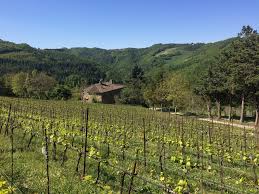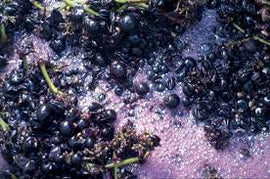As we approach the summer sipping season, we want to clear up a few misconceptions about rosé wines and remind you that you can't judge a rosé by its color. Despite evidence to the contrary, it's a common assumption that pastel-pink rosé is dry while ruby-hued rosé is sweet. There's so much more to the nuanced tones of rosé than meets the eye. It's difficult to pin down exactly why the misleading color-coded assumptions are so prevalent among wine lovers, but theories abound. When it comes to rosé — from the palest pink to the richest ruby — color has absolutely nothing to do with sweetness. Let that sink in. Color is completely and totally a result of the maceration process, aka the time a vintner allows the red grape skins (rosé is always made from red grapes) and their juices to mingle after crushing. The longer they linger, the darker the color.
Another misconception surrounds rosé of Zinfandel vs. white Zinfandel, which I’m here to report are NOT the same thing! During the 1970s in California, Bob Trinchero and the rest of the team at Sutter Home were trying to create a deeper, more intense Zinfandel. In order to achieve their desired result, they decided to skim off over 500 gallons of the liquid that had only been soaking with the skins for a few short days since the grapes had been pressed. Their thinking was that if they removed some of the liquid, the ratio of more skins to less remaining liquid would create the intense red Zinfandel they were looking for, much like using two tea bags instead of one brews a stronger cup. The issue then became, what the heck to do with the juice they had skimmed off. That juice had become a rosé, it had a pink color and was very dry, so they decided to bottle it and sell it to the public, but fearing consumers wouldn’t respond to the name rose, they called it White Zinfandel instead.
Then 1975, while Sutter Home was making their White Zinfandel, they experienced a Stuck Fermentation, which basically means the yeast all die before they convert all the sugar to alcohol. The result was a wine that was boozy to be sure, but still had some sugar left behind, making it sweet. The wine was a massive success, no doubt driven by its drinkability and cheap price tag, and Sutter Home became the champion of the movement, creating the cheap, sweet wine in massive quantities.
Although blush wines were popular, they were not respected. That sickly sweet white zin adored by housewives and found on every major grocery store shelf wasn’t popular among wine critics, who saw it as trashy. The general population soon took note. White zin disappeared from restaurant menus. It was as condemned as New Coke. The Keystone of the wine world. It died a quick death, and anyone respectable still drinking the stuff did so in private, away from the judging eyes of their peers.
Think Pink!
Carrie Upson- General Manager & Wine Buyer
|
2021 Pormenor Douro Rosé |
|
|
Location: Douro, Portugal |
About the Winemaker: Pormenor Vinhos is the dream of owner and winemaker Pedro Coelho. His goal is to free himself from the bounds of tradition in the Douro Valley. Pormenor translates to “details” and launched with the 2013 vintage, rooted in a fierce belief of what Pedro did not want from his wines: high alcohol, extraction, new oak. Instead, Pedro is locked in on the potential for Douro wines to show freshness, restrained alcohol, and elegance. One of the details Pedro insists on to deliver on this vision is old vines. With vines ranging from 45 to 100+ years primarily in the Douro Superior, he has found and secured incredibly rare vineyard material. Another important detail is sourcing grapes from high elevation vineyards which help combat the natural heat of the valley. He works with indigenous varieties only and fermentation is done through native, wild yeasts. About the Winemaking: Harvests are by hand, and Pedro’s aim is to make wines that reflect the beauty of the vines and land, transmitting the sense of place through the climate, soil, and vines of each harvest. To accomplish this, work in the cellar is a minimal intervention approach, with indigenous yeasts and low sulfur avoiding all unnatural additives. With low extraction and long macerations, Pormenor seeks elegant and mineral wines focused with natural freshness and high acidity that tend to be lower in alcohol. Tasting Notes: Clean and a light red in color. On the nose you might find good minerality and freshness with red fruit like strawberry and cherry. On the palate is a vibrant, crisp acidity, minerality, and salinity with good structure from the old vines and aging on the lees. The wine has an incredibly clean look and feel, and is only 11% ABV. . It is bright red, mineral in quality from the natural approach with fresh red fruits on the nose and mouth. The wine has good structure given the old vine grapes and can be enjoyed with or without food. |
|
Winemaker: Pedro Coelho |
|
|
Price: $23.99 btl/ $259.09 |
|
|
Suggested Food Pairing: Pasta salad Crab cakes Swordfish steaks |
|
|
2023 Pedroncelli Rosé |
|
|
Location: Dry Creek Valley, Sonoma, California |
About the Winemaker: Pedroncelli has been making rosé from Zinfandel for over 70 vintages. The Zinfandel grape defines their Rosé with fresh fruit flavor and a quaffable charm. Its crisp style, framed by berry and spice notes, sets our Rosé apart from all the others. The grapes were harvested from the critically acclaimed Bushnell Vineyard, which has been in the family and a source to the winery since the 1940s. Located on a high bench, the vineyard’s well-drained rocky soils and climate create the perfect combination for high-quality Zinfandel fruit. About The Winemaking: The vintage had a good start with plenty of rain to begin the season. Cooler than normal temperatures slowed the vineyard growth over the spring and summer. Slow ripening to maturity allowed the grapes to showcase more aromas and flavors than previous vintages. Highly aromatic, excellent quality. Once destemmed and pressed, the 100% free run juice is transferred to temperature-controlled stainless steel tanks for a slow fermentation at 58 degrees F. The fruitiness of the Zinfandel grape lends a rounded and balanced flavor to the wine. Bottled a few months after harvest, the wine captures the vintage's freshness. Tasting Notes: Very aromatic! The fresh aromas of strawberry, rose petals, and spice are followed by flavors of red berries, cherry, and spice with a touch of citrus. It is nicely balanced between crisp acidity and refreshing fruit flavors. This Rosé is made to be enjoyed upon release. |
|
Winemaker: Montse Reese |
|
|
Price: $18.99 btl/$205.09 case |
|
|
Suggested Food Pairing: Paneer Chili BBQ pork ribs Lamb kebabs Frittata |
|





